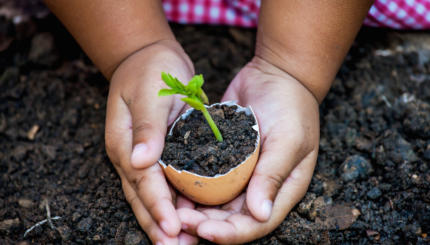The walls of Jerusalem have historically been a source of inspiration for romance and love. Thousands of years before anyone heard of Saint Valentine or Sadie Hawkins, the Jewish people created a Jerusalem-centered love festival for couples. This custom is quite in keeping with the sensuous poetry of the Song of Songs, canonized in the Hebrew Scriptures.
In the glow of a full summer moon, young women, robed in white, would dance in the fields outside the walls of Jerusalem. The men would follow in hopes of finding a bride. This ancient Jewish love festival is called Tu B’Av because it was celebrated on the 15th day of the Hebrew month of Av (the Hebrew letters for “Tu” equal the number 15). Coming one week after Tisha B’Av, the saddest day of the Jewish year, Tu B’Av is celebrated outside of the walls of the city, away from the Temple Mount, the site of the destruction.
Whereas Tisha B’Av is the day when [tradition says] God declared that the Jews would wander 40 years in the desert (until the generation that knew slavery died out), Tu B’Av is the day when, 40 years later, the remaining 15,000 Israelites of the desert generation were told they would be able to enter the Promised Land. God was able to forgive the Jewish people on this day, even for the sin of having built and worshiped a Golden Calf.
In the (Ta’anit 4:8) we read that Rabbi Simeon ben Gamliel said there never were in Israel greater days of joy than the 15th of Av and the Day of Atonement. On these days the daughters of Jerusalem used to walk out in white garments that they borrowed in order not to put to shame anyone who had none. The daughters of Jerusalem danced in the vineyards exclaiming, “Young man, lift up your eyes and see what you choose for yourself. Do not set your eyes on beauty but set them on good family. Grace is deceitful and beauty is vain. But a woman that fears God, she will be praised.”

Help us keep Jewish knowledge accessible to millions of people around the world.
Your donation to My Jewish Learning fuels endless journeys of Jewish discovery. With your help, My Jewish Learning can continue to provide nonstop opportunities for learning, connection and growth.
Rabbi Simeon’s linking of Tu B’Av and Yom Kippur is at first disturbing. Why does the Jewish year end with a celebration of love? The answer says a lot about Judaism’s unique perspective on relationships, a perspective that could enhance courtship today.
Tu B’Av, like , is about introspection and new beginnings concerning our relationships and personal values. How courting was done is indicative of this view. The young girls borrowed white dresses so that the young men could not choose among them according to materialistic concerns. The Talmud teaches that women set the rules; the women admonish their suitors to pick not according to beauty, but by the good name of the women’s families and by their fear of God. Today we live in a world that is status and fashion conscious, a world of beauty pageants and beauty ideals set by television and movies, and some synagogues are even described as “meat markets” where one goes to look over the unmarried merchandise.
Tu B’Av tells us to look beneath the surface when looking for (or at) a life partner, just as Yom Kippur forces us to look deep into ourselves before God grants us life anew. Like Yom Kippur, Tu B’Av is a time for reflection and introspection. But instead of being an individual process, it is a mutual, shared experience between two people.
Tu B’Av is a great day for weddings, commitment ceremonies, renewal of vows, or proposing. It is a day for enhancing current relationships or defining anew what you are looking for in a partner. It is a day for romance, explored through singing, dancing, giving flowers, and studying. The rabbis teach that on Tu B’Av one begins to set more time for studying as the High Holidays approach.
Reprinted with permission of the authors from Jewish Family and Life: Traditions, Holidays, and Values for Today’s Parents and Children, published by Golden Books.



